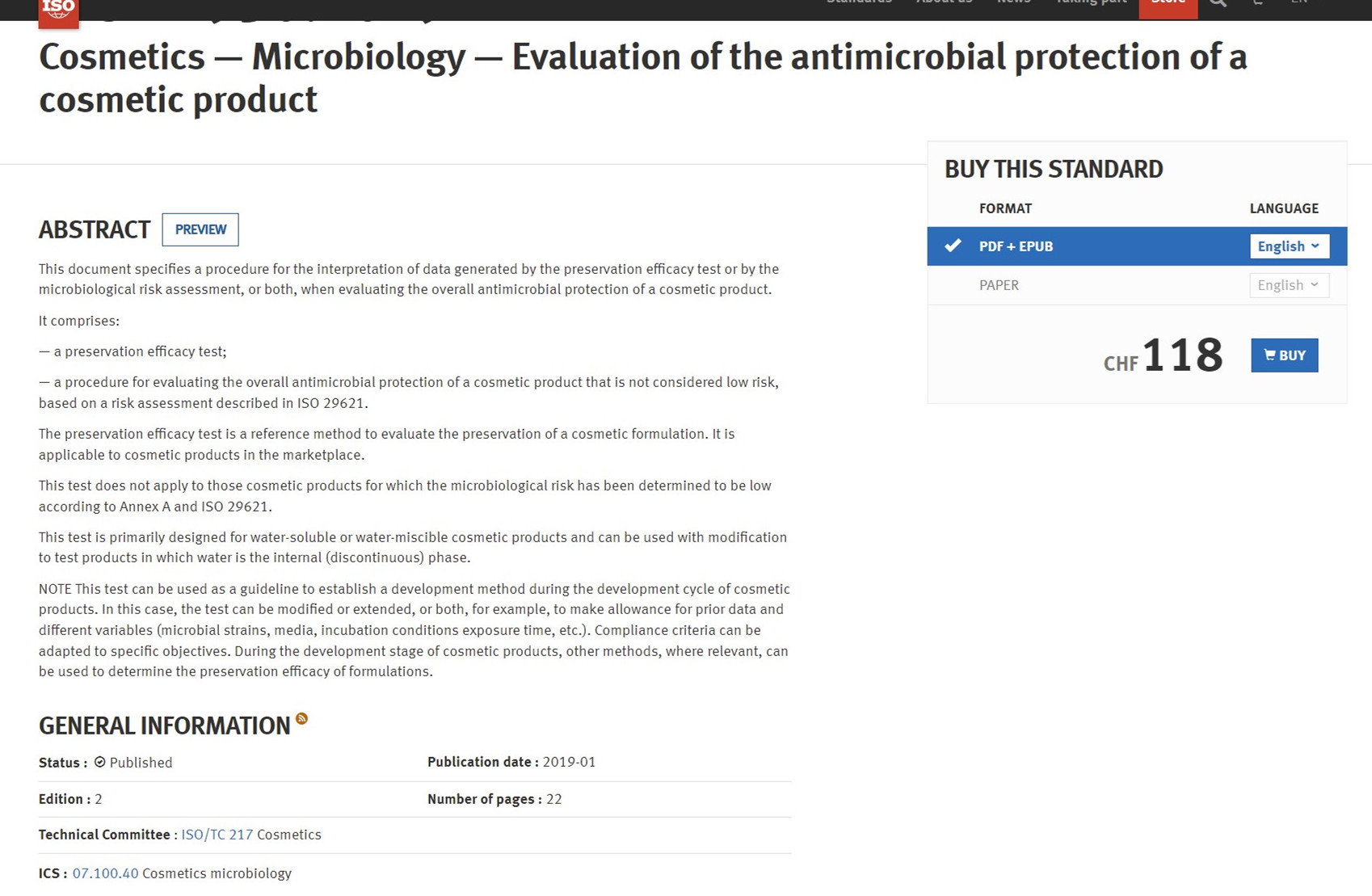化妆品 微生物学化妆品的抗菌保护评价
时间:2022-03-07 14:29:25 来源:ISO 点击量:

ISO 11930-2019
化妆品 微生物学化妆品的抗菌保护评价
Cosmetics — Microbiology — Evaluation of the antimicrobial protection of a cosmetic product
Introduction
This document is designed to be used in the overall evaluation of the antimicrobial protection of a cosmetic product.
The antimicrobial protection of a product can come from many sources:
— chemical preservation;
— inherent characteristics of the formulation;
— package design;
— manufacturing process.
This document defines a series of steps to be taken when assessing the overall antimicrobial protection of a cosmetic product. A reference method for a preservation efficacy test (challenge test) along with evaluation criteria is also described in this document.
The test described in this document involves, for each test microorganism, placing the formulation in contact with a calibrated inoculum, and then measuring the changes in the microorganism count at set time intervals for a set period and at a set temperature.
The data generated by the risk assessment (see ISO 29621) or by the preservation efficacy test, or both, are used to establish the level of antimicrobial protection required to minimize user risk.
1 Scope
This document specifies a procedure for the interpretation of data generated by the preservation efficacy test or by the microbiological risk assessment, or both, when evaluating the overall antimicrobial protection of a cosmetic product.
It comprises:
— a preservation efficacy test;
— a procedure for evaluating the overall antimicrobial protection of a cosmetic product that is not considered low risk, based on a risk assessment described in ISO 29621.
The preservation efficacy test is a reference method to evaluate the preservation of a cosmetic formulation. It is applicable to cosmetic products in the marketplace.
This test does not apply to those cosmetic products for which the microbiological risk has been determined to be low according to Annex A and ISO 29621.
This test is primarily designed for water-soluble or water-miscible cosmetic products and can be used with modification to test products in which water is the internal (discontinuous) phase.
NOTE This test can be used as a guideline to establish a development method during the development cycle of cosmetic products. In this case, the test can be modified or extended, or both, for example, to make allowance for prior data and different variables (microbial strains, media, incubation conditions exposure time, etc.). Compliance criteria can be adapted to specific objectives. During the development stage of cosmetic products, other methods, where relevant, can be used to determine the preservation efficacy of formulations.
2 Normative references
The following documents are referred to in the text in such a way that some or all of their content constitutes requirements of this document. For dated references, only the edition cited applies. For undated references, the latest edition of the referenced document (including any amendments) applies.
ISO 16212, Cosmetics — Microbiology — Enumeration of yeast and mould
ISO 18415, Cosmetics — Microbiology — Detection of specified and non-specified microorganisms
ISO 21148:2017, Cosmetics — Microbiology — General instructions for microbiological examination
ISO 21149, Cosmetics — Microbiology — Enumeration and detection of aerobic mesophilic bacteria
ISO 29621, Cosmetics — Microbiology — Guidelines for the risk assessment and identification of microbiologically low-risk products
CIAA会员单位免费下载
